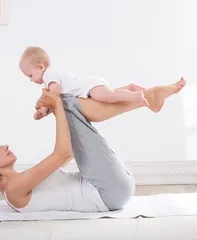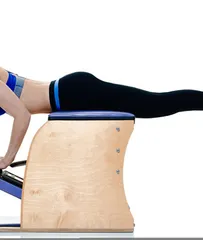Primary Course of Weight Loss Yoga: Getting Started and Breathing
Primary Course of Weight Loss Yoga 1: A Must Know for Getting Started
1. Persistence. When you are beginning to yoga, you will feel that every movement of yoga is difficult to do, and you will want to give up many times. At this time, you need to have a belief in persevering. You must be convinced that yoga will bring you a lot of benefits. You must not give up.
2. From the perspective of physical exercise, it is best to practice every day. If you are busy at work, you should practice at least twice a week, and each time should be between 1 and 2 hours, so as to ensure the effect of practice. If you practice at home, it should take at least 30 minutes for the results to be obvious. If you don't have enough time, you can practice pranayama or meditation for more than ten minutes.
3. Wear loose, sweat-absorbing, and breathable cotton or linen clothing, and the top should be fitted to complete some inversion movements. Pants are best made with straps rather than elastic straps. Nowadays, clothes made of pure cotton and lycra are also a better choice. You don't need to wear shoes and can be done barefoot. On the one hand, barefoot can relax the legs, enhance the perception of the soles of the feet, and massage and squeeze the acupuncture points on the soles of the feet; On the other hand, the friction between the soles of the feet and the ground facilitates the completion of yoga positions, especially balance exercises. Of course, if the weather is cold, you can also put on your socks and practice.
4. The best time to practice yoga is in the morning and before breakfast, followed by 3-4 hours in the evening or after meals. It can also be done at other times, but it should be done on an empty stomach or after completely digesting the food.
5. Many positions will squeeze into the stomach during practice. If you eat something, it may cause dizziness, nausea, or even vomiting. Moreover, during exercise, the body's blood is concentrated on local muscles or organs, which will affect the digestion and absorption of food and increase the burden on the heart. If you feel hungry, you can eat a small amount of easy-to-digest food 1 to 2 hours before exercise. This can relieve the hunger during exercise. During exercise, your body's facial muscles, ears, eyes or breathing should not feel any uncomfortable pressure. If you feel pressure, you should stop immediately.
6. After bathing, it will make it easier to practice yoga poses. After practicing yoga poses, the body will become sticky due to sweating, so it is best to take a bath after 15 minutes. Bathing before and after practicing yoga poses can leave both the mind and body more refreshed.
7. After the practice is over, be sure to relax. The relaxation method is the same as the initial meditation method. Every part of the brain and body must be fully relaxed. Women must not practice headstand poses during their physiological period.
Primary Course of Weight Loss Yoga 2: Practicing Breathing

Expand your chest and breathe fully
Life is a breath and breath. Start by experiencing your emotions and emotions from the beginning of your breathing, and you can find a way to communicate with yourself.
Someone said after learning yoga,"I have lived for more than 30 years to learn how to breathe now!" Ha! Does that sound weird? Actually, it's not surprising at all. More than 90% of the adults around us cannot breathe correctly and are often in a state of short breathing.

Learn to breathe, reduce pressure and resist falls
When you feel nervous and afraid, when you feel stressed and exhausted, when you feel depressed and sad, let us breathe together. You can choose to stand or sit. As long as you breathe completely, it will help!

Consciously pay attention to your breathing
Yoga emphasizes breathing and believes that we have the ability to control our own energy. After training, everyone has this ability. Therefore, yoga breathing is called Pranayama, which means controlling life energy. Incorrect breathing can cause waste of energy and even lead to imbalance between the body and mind. Paying attention to your breathing at all times is a manifestation of "consciousness". If we can pay attention to our breathing while working, living or resting, our body and mind will become more peaceful and calmer.

Abdominal breathing at any time
Abdominal breathing is the most commonly practiced type of yoga breathing, because the process of breathing is the process of moving the diaphragm up and down, so it is also called diaphragm breathing. This breathing is often used in a relaxed state and is the best way to relax.

abdominal diaphragm breathing
Sitting posture, when inhaling in, feel your breath reaching the abdominal cavity. The abdomen relaxes, the abdomen naturally bulges outward, and the diaphragm rises upward; when exhaling, the abdomen naturally adjoins in, the diaphragm sinks, and the breath passes through the nasal cavity to slowly breathe out. Maintain this rhythmic breathing state.
Feel your breath all the way to the abdominal cavity
Practice frequently, and after being proficient, you can do it in any process of standing, sitting, and walking.